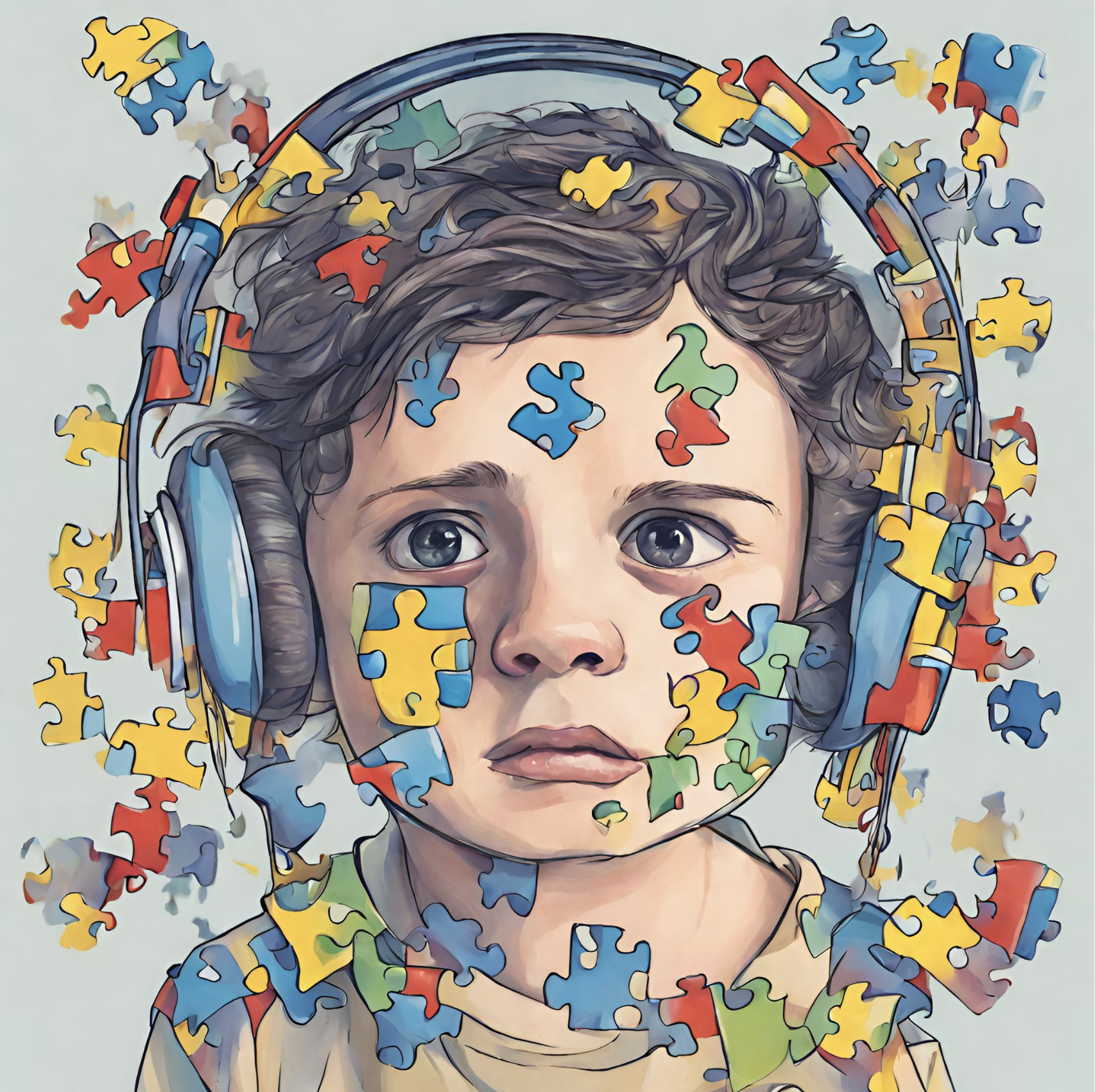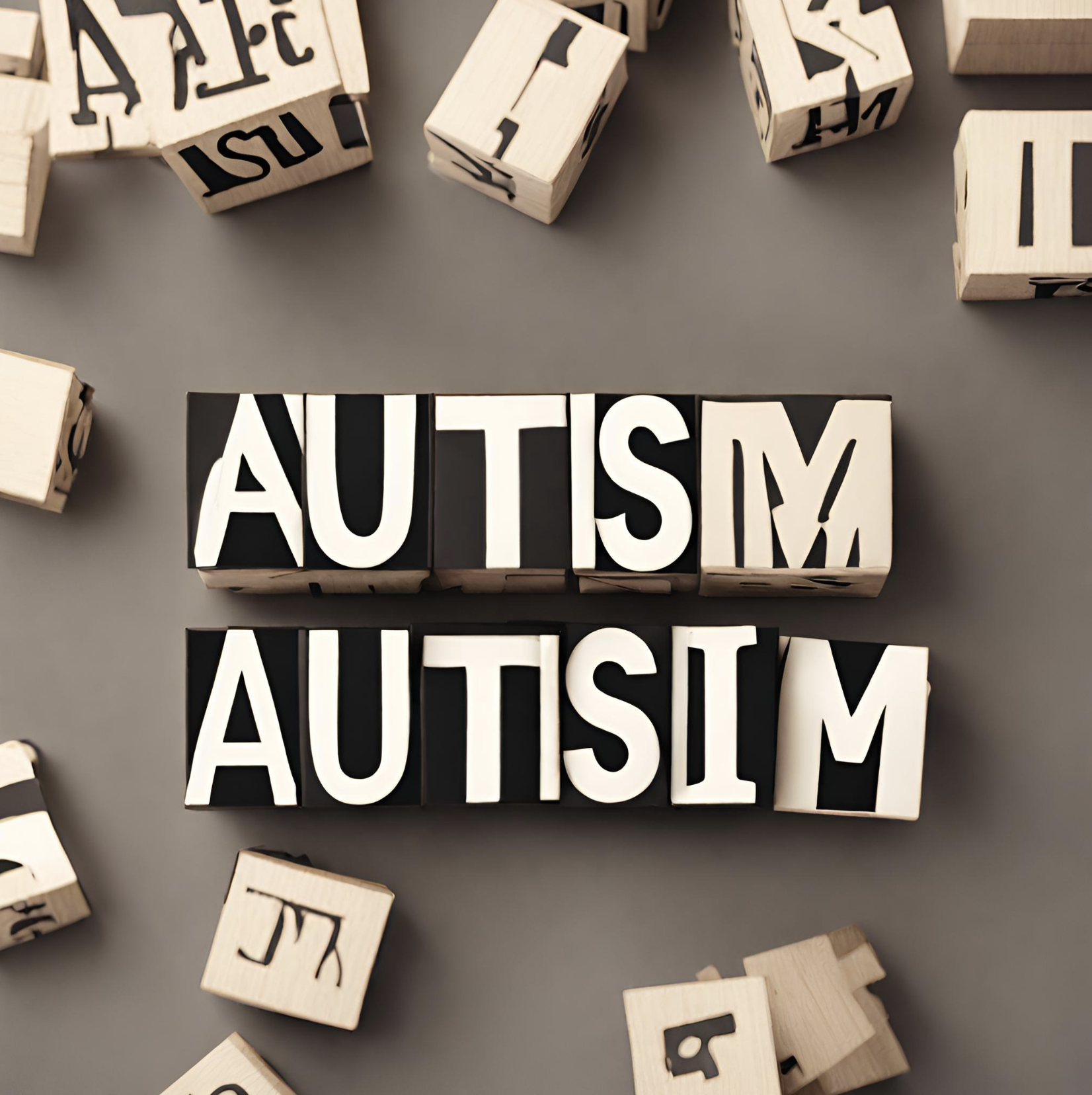Imagine a world where the hum of fluorescent lights isn’t a constant thrumming in your head, where the cacophony of a bustling street fades into a gentle murmur, and where the scratchy wool sweater doesn’t send shivers down your spine. For many individuals with neurodiverse conditions like autism and ADHD, this isn’t a fantasy – it’s a necessity.
Sensory overload, the overwhelming bombardment of sensory information, can be a daily struggle for those who process the world differently. This can manifest in various ways: bright lights causing migraines, loud noises triggering anxiety, strong smells inducing nausea, or certain textures leading to meltdowns.
However, by creating sensory-friendly environments, we can significantly improve the lives of neurodiverse individuals. These spaces provide a sense of calm, control, and predictability, allowing them to participate more fully in daily activities without the constant struggle against sensory overload.
Understanding Sensory Processing
It’s crucial to acknowledge that neurodiverse individuals often process sensory information differently than the neurotypical population. This can be categorized into two main areas:
- Hypersensitivity: Certain senses are overly sensitive, leading to discomfort or aversion to specific stimuli like loud noises, bright lights, strong smells, or rough textures.
- Hyposensitivity: Some senses may be under-responsive, leading to a need for increased sensory input to feel engaged. This could involve seeking out loud noises, rough textures, or constant movement.
Building a Calming Haven and Avoid Sensory Overload
Creating a sensory-friendly environment involves considering the impact of various sensory inputs and implementing strategies to manage them. Here are some key areas to focus on:
1. Visual Stimulation:
- Clutter Control: Minimize visual clutter by organising belongings, using clear storage solutions, and avoiding excessive decorations. A cluttered space can be overwhelming and visually overstimulating.
- Colour Palette: Opt for neutral colours and avoid busy patterns that can be distracting. Consider incorporating calming colours like blue or green, as these are often associated with tranquility.
- Lighting: Employ natural light whenever possible. Utilise dimmable lights and avoid harsh overhead lighting. Consider sensory mood lights for calming effects and adjustable colour palettes.
2. Auditory Stimulation:
- Noise Reduction: Minimise background noise by using soundproofing materials, turning off unnecessary electronics, and encouraging quiet activities.
- Designated Quiet Areas: Provide a quiet space to retreat to when overwhelmed by noise. This could be a library corner, a designated relaxation room, or even a quiet corner in a classroom.
- Sensory Tools: Offer noise-cancelling headphones or ear defenders for individuals who find specific sounds unbearable. This can be particularly helpful in loud environments like shopping centres or busy streets.
3. Tactile Stimulation:
- Texture Awareness: Be mindful of textures in furniture, clothing, and everyday objects. Offer a variety of textures for individuals to explore and self-regulate. This could include soft blankets, smooth surfaces, or textured fidget toys.
- Fidget Toys: Providing fidget toys with different textures can be a helpful tool for managing anxiety and focusing attention. These can be anything from simple stress balls to textured chewable necklaces.
- Weighted Blankets: Some individuals find deep pressure calming, so weighted blankets can be a beneficial tool for managing sensory overload and promoting relaxation.
4. Olfactory Stimulation:
- Air Quality: Maintain good air quality by ensuring proper ventilation and avoiding strong perfumes or cleaning products. These can trigger sensitivities and cause discomfort.
- Calming Scents: Offer essential oils or diffusers with calming scents like lavender or chamomile. These can create a more soothing atmosphere and promote feelings of well-being.
5. Additional Considerations:
- Temperature Control: Maintaining a comfortable temperature is crucial. Extreme heat or cold can exacerbate sensory sensitivities and lead to discomfort.
- Flexible Seating: Offer flexible seating options like beanbags or wobble chairs to allow for movement and self-regulation. This can be particularly beneficial for children with ADHD who may struggle to sit still for long periods.
- Sensory Tools: Provide access to sensory tools like fidget spinners, chewable necklaces, or calming putty. These can be helpful for individuals who need additional sensory input to self-regulate.
- Communication: Clearly communicate expectations and provide visual aids when necessary. This can help individuals with sensory processing difficulties understand their surroundings and anticipate potential triggers.
- Sensory Breaks: Encourage regular breaks in quiet spaces for individuals to self-regulate. This could involve taking a walk outside, lying down in a quiet room, or simply taking a few deep breaths.

Coaching for Sensory Overload Management
Beyond creating a sensory-friendly environment, coaching can be a powerful tool for individuals with ADHD and/or autism to manage sensory overload. A trained coach can provide personalised guidance and support in developing self-awareness of sensory triggers, identifying and implementing coping mechanisms, and building resilience to overstimulation. Through coaching, individuals can learn valuable skills like:
- Identifying Early Warning Signs: Recognising the subtle signs of sensory overload before it escalates into a meltdown or shutdown. This can include physical sensations like increased heart rate, difficulty concentrating, or feeling overwhelmed.
- Developing Calming Strategies: Practicing techniques like deep breathing exercises, mindfulness meditation, or progressive muscle relaxation to self-regulate and regain composure when experiencing sensory overload.
- Communicating Needs Effectively: Learning to communicate their sensory needs clearly and confidently to others, whether it’s requesting a quiet space, adjusting lighting, or simply taking a break.
- Building a Support Network: Identifying and connecting with supportive individuals who understand their challenges and can offer encouragement and assistance.
Building a More Inclusive World
Creating sensory-friendly environments benefits everyone, not just neurodiverse individuals. These spaces promote:
- Reduced Anxiety and Stress: By minimising sensory overload, individuals feel calmer and more in control, leading to reduced anxiety and stress levels.
- Improved Focus and Concentration: A less stimulating environment allows for better focus and engagement in tasks, enhancing productivity and learning.
- Enhanced Social Interaction: Sensory-friendly spaces create a more inclusive environment, fostering positive social interactions and reducing social isolation.
- Increased Participation: Individuals with sensory sensitivities are more likely to participate in activities and events when their needs are met, leading to a richer and more fulfilling life.
By implementing these strategies, we can create spaces that are welcoming and accessible for everyone. This allows neurodiverse individuals to thrive and participate fully in society without the constant struggle of sensory overload. Remember, small changes can make a significant difference in the lives of those who experience the world differently.
Let’s work together to build a world where sensory-friendly environments are the norm, not the exception. A world where everyone feels comfortable, empowered, and embraced for who they are.

Useful Links for Sensory Overload
Here are some helpful links for further information on creating sensory-friendly environments and managing sensory overload:
General Resources:
- The Sensory Processing Disorder Foundation
- Autism Spectrum Australia
- The National Autistic Society (UK)
- Sensory Friendly
Articles and Guides:
- Coping Strategies for Adults with Sensory Overload
- Treating Sensory Processing Issues
- Resources for Parents and Professionals
Coaching and Support:
- The Very Versatile Lemon – ADHD & ASD Coaching
- The International Coach Federation (ICF)
- ADDitude Magazine
- The National Association of Social Workers (NASW)
Remember, these are just a few starting points. Many other resources and organisations are dedicated to supporting individuals with neurodiverse conditions and sensory sensitivities.
Autism Spectrum Disorder (ASD) is a neurodevelopmental condition characterised by challenges with social interaction, communication, and repetitive behaviours. Social interaction can be a particularly complex area for individuals with autism, often leading to feelings of isolation and frustration. However, autism and social skills coaching can be a powerful tool in helping individuals navigate the social landscape and build meaningful connections.
Understanding Social Skills Difficulties in Autism
Social skills encompass a broad range of abilities, including:
- Non-verbal communication: Reading and interpreting facial expressions, body language, and tone of voice.
- Verbal communication: Initiating and maintaining conversations, using appropriate language for the situation, and understanding turn-taking.
- Social cognition: Understanding social cues, recognising emotions in others, and understanding social norms and expectations.
- Empathy: The ability to understand and share the feelings of others.
Individuals with autism may experience difficulties in any or all of these areas. Some common challenges include:
- Nonverbal communication: Reading facial expressions, body language, and tone of voice can be challenging. Misinterpreting these cues can lead to misunderstandings and awkward interactions.
- Theory of mind: This refers to the ability to understand that others have their own thoughts, feelings, and intentions. Difficulty with theory of mind can make it hard to predict how someone might react or feel in a situation.
- Social reciprocity: Initiating and maintaining conversations, taking turns, and understanding social norms can be complex.
- Sensory processing: Oversensitivity to certain sounds, smells, or textures can make it overwhelming to focus on social cues or engage in interactions.
- Difficulty making eye contact.
- Taking things literally and missing sarcasm or jokes.
- Difficulty understanding social cues and unwritten rules.
- Appearing withdrawn or disinterested in social interactions.
These challenges can make it difficult for people with autism to make friends, participate in social activities, or build relationships. Autism and social skills aims to bridge this gap and equip them with the tools they need to navigate social situations with greater confidence and understanding.

The Benefits of Autism and Social Skills Coaching
Coaching offers a range of benefits for individuals with autism who struggle socially, including:
- Improved communication skills: Learning to use nonverbal cues effectively, initiating and maintaining conversations, and adapting communication styles for different situations.
- Enhanced social cognition: Developing the ability to understand social cues, recognise emotions in others, and navigate social norms.
- Increased self-awareness: Gaining a better understanding of their own social behaviours and the impact they have on others.
- Reduced anxiety: Learning coping mechanisms to manage anxiety associated with social interactions.
- Greater confidence: Building the skills and knowledge needed to participate in social activities more confidently.
- Improved social relationships: Developing and nurturing stronger friendships and connections with others.
Autism and Social Skills Coaching Techniques
Autism and social skills coaching can involve a variety of techniques, tailored to the individual’s specific needs and learning style. Here are some common approaches:
- Strength-based approach: Focussing on incorporating client strengths to overcome social and emotional challenges.
- Direct instruction: Teaching social skills explicitly, breaking them down into smaller steps, and providing clear explanations.
- Modelling: Demonstrating social skills through role-playing, video demonstrations, or social stories.
- Practice: Providing opportunities to practice social skills in a safe and controlled environment, such as role-playing scenarios or group activities.
- Feedback: Offering constructive feedback to help individuals improve their communication and social interaction skills.
- Positive reinforcement: Rewarding positive social behaviours to encourage their development.
- Visual aids: Using visual tools like pictures, charts, or social scripts to support learning and understanding.
The Role of Coaching in Everyday Life
Autism and social skills coaching can extend beyond sessions and into daily life. Here are some ways parents, carers, and educators can support social skills development:
- Provide opportunities for social interaction: Encourage participation in social activities, clubs, or sports teams.
- Model appropriate social behaviours: Demonstrate positive social interactions with others.
- Use clear and concise language: Avoid sarcasm or complex instructions.
- Break down social situations: Explain social cues and expectations beforehand.
- Offer positive reinforcement: Praise efforts and celebrate social successes.
- Remember that those with autism have different brain wiring: Avoid reacting to behaviours negatively or with frustration. It is more likely than not that the autistic individual is unaware or confused about appropriate behaviours. Use these situations as teachable moments.
Finding the Autism Coach
The effectiveness of autism coaching depends on finding a qualified and experienced practitioner. Here are some factors to consider when choosing a coach:
- Qualifications: Look for a coach with experience working with individuals with autism and a relevant qualification in social work, psychology, or education.
- Approach: Consider the coaching approach and whether it aligns with the individual’s learning style and needs.
- Experience: Ask about the coach’s experience working with social skills in autism.
- Communication style: Choose a coach with a positive and encouraging communication style.

Building a Supportive Network
Autism and social skills coaching can be a powerful tool, but it’s important to remember that it’s a journey, not a destination. Patience, support, and a focus on progress are key. Additionally, building a supportive network of friends, family, and professionals is crucial for individuals with autism to thrive socially. By fostering a sense of understanding and inclusion, we can create a world where everyone feels empowered to connect and participate meaningfully.
Remember:
- Autism coaching is not about becoming neurotypical, but about developing strategies that work for the individual.
- Every person with autism is unique, and their social skills needs will vary. Social skills coaching can be a lifelong process, offering ongoing support and guidance as individuals navigate different social situations throughout their lives.
Conclusion
Social interaction can be a complex dance, but with the right support and strategies, individuals with autism can develop the skills they need to connect with others and build meaningful relationships. Autism and social skills coaching offers a valuable tool for empowering them to navigate the social landscape with confidence and participate actively in the world around them. By fostering a more inclusive and understanding environment, we can ensure everyone has the opportunity to connect and thrive.

Useful Links
These links provide a variety of resources for both individuals with autism and those who support them. They can be helpful for learning more about social skills coaching, finding relevant resources, and understanding social skills development in autism.
- The Very Versatile Lemon: Offers ADHD and autism coaching, including that with a focus on social skills, to clients in Australia and worldwide. Katie has lived experience with autism and has a background in education, with over 12 years experience working in schools.
- National Autistic Society: Provides information and resources on autism, including social skills development.
- Autism Speaks: Offers resources on social skills development for individuals with autism and their families.
- Social Skills Activities for Children with Autism: Provides free downloadable resources for developing social skills in children with autism.
- Raising Children Network : Provides tips and strategies for helping children with autism develop social skills.
- The Jed Foundation: Offers information on the social skills challenges faced by individuals with autism.
- Autism at King’s College London: Provides a research-based view of social communication difficulties in autism.
- Understood.org Offers information on the different aspects of social skills and how they can be impacted by autism.
Remember: It’s important to choose resources and coaching services from reputable organisations with experience working with autism.
Anxiety. It’s a feeling most of us know all too well – that knot in your stomach, the racing thoughts, the constant hum of worry. But for autistic individuals, anxiety can be a particularly pervasive and complex challenge. Understanding how anxiety manifests in autism, and exploring strategies like coaching, can be a crucial step towards a calmer, more fulfilling life.
The Intersection of Autism and Anxiety
Statistics paint a clear picture: research suggests that anxiety disorders affect roughly 40% of autistic individuals. This significantly higher rate compared to the general population highlights a unique intersection between the two conditions. Here’s why anxiety might be more prevalent in autism:
- Sensory Overload: The world can be a barrage of overwhelming sights, sounds, smells, and textures for autistic individuals. This sensory overload can trigger fight-or-flight responses, leading to anxiety and stress.
- Social Challenges: Social interaction can be a minefield for autistic individuals. Difficulty interpreting social cues, navigating unspoken rules, and experiencing social rejection can fuel anxiety in social situations.
- Change and Routine: Autistic individuals often thrive on routine and predictability. Disruptions to routine or unexpected changes can cause anxiety and a sense of loss of control.
- Perfectionism and Black-and-White Thinking: Some autistic individuals have strong desires for order and perfection. When things don’t go according to plan or mistakes are made, it can trigger anxiety and self-criticism.
The Many Faces of Anxiety in Autism
Anxiety in autism can manifest in diverse ways – not always fitting the stereotypical image of panic attacks. Here are some common signs to watch for:
- Physical Symptoms: Headaches, stomachaches, fatigue, difficulty sleeping, and changes in appetite can all be signs of anxiety in autistic individuals.
- Repetitive Behaviours: Stimming behaviours, such as rocking or flapping hands, can increase in frequency or intensity when someone with autism feels anxious.
- Social Withdrawal: An autistic individual experiencing anxiety might withdraw from social interactions or activities they previously enjoyed.
- Meltdowns and Shutdowns: In extreme cases, anxiety can lead to meltdowns (overwhelming emotional outbursts) or shutdowns (withdrawal and disengagement from the environment).
The Impact of Anxiety in Autism
Unmanaged anxiety can have a significant impact on an autistic person’s life. It can:
- Impede Daily Functioning: Anxiety can make it difficult to complete daily tasks, attend school or work, and maintain relationships.
- Reduce Quality of Life: Constant anxiety can take a toll on mental and emotional well-being, leading to feelings of frustration, depression, and isolation.
- Hinder Self-Esteem: Fear of failure and social anxieties can negatively impact self-esteem and self-confidence.
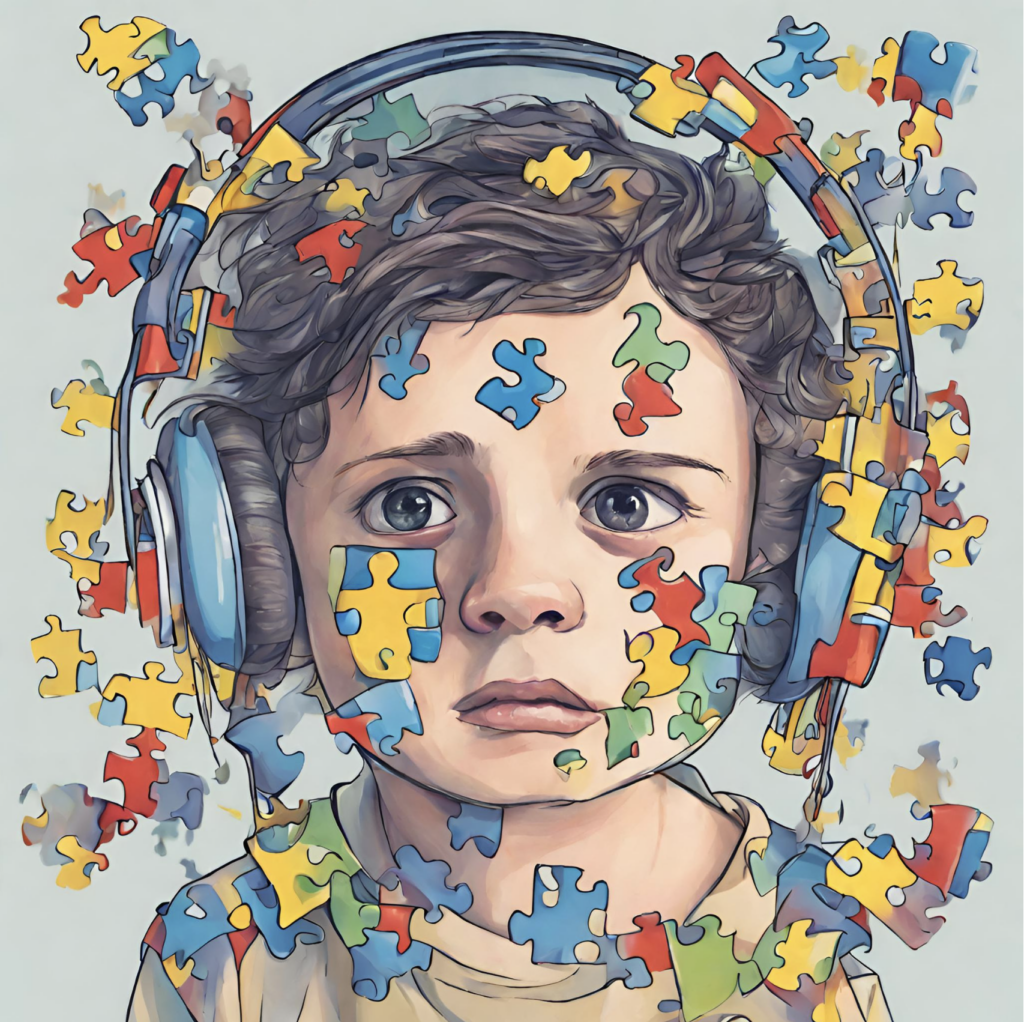
Strategies for Managing Anxiety in Autism
Fortunately, there are strategies that can help autistic individuals manage their anxiety. These include:
- Mindfulness and Relaxation Techniques: Practicing mindfulness meditation, deep breathing exercises, and progressive muscle relaxation can help calm the nervous system and manage anxiety symptoms.
- Sensory Integration Therapy: This therapy can help individuals develop a better tolerance for sensory input, reducing sensory overload – a common trigger for anxiety.
- Social Skills Groups: Participating in social skills groups can provide a safe and supportive environment for autistic individuals to learn and practice social skills, boosting confidence and reducing social anxiety.
- Therapy: Cognitive behavioural therapy (CBT) can be beneficial in identifying and challenging negative thought patterns that contribute to anxiety.
- Creating a Support Network: Surrounding yourself with supportive friends, family, and professionals who understand autism can provide invaluable emotional support and a sense of belonging.
Coaching: A Path Towards Calmer Waters
While traditional therapies offer valuable tools, autism coaching can be a powerful complementary approach for autistic individuals struggling with anxiety. Coaching provides a safe and supportive space for individuals to explore their experiences, develop personalised coping mechanisms, and build resilience. Here’s how coaching can be beneficial:
- Self-Awareness: A coach can assist individuals in understanding how their specific traits interact with anxiety.
- Understanding Anxiety Triggers: A coach can help individuals identify their specific anxiety triggers, whether it’s sensory overload, social situations, or changes in routine.
- Developing Coping Mechanisms: Coaching can equip individuals with practical strategies to manage anxiety, such as deep breathing exercises, mindfulness techniques, and sensory calming activities.
- Building Social Skills: Many autistic individuals struggle with social anxiety. Coaching can help them develop communication skills, understand social cues, and navigate social situations with greater confidence.
- Building Resilience: Coaching can help individuals develop coping mechanisms for dealing with change and managing unexpected situations, reducing anxiety and promoting emotional resilience.
- Challenging Negative Thoughts: Through coaching, autistic individuals can learn to identify and challenge negative thought patterns that contribute to anxiety.
- Developing Self-Compassion: Autism comes with its own set of challenges. Coaching can foster self-acceptance, self-compassion, and a positive self-image, mitigating the impact of anxiety.
The Coaching Process for Autistic Individuals
Similar to ADHD coaching, coaching for anxiety in autism is a collaborative and individualised process. Here’s a typical breakdown:
- Initial Assessment: The coach and client discuss the individual’s challenges and goals.
- Developing a Coaching Plan: A plan is created outlining specific areas to focus on and strategies to implement.
- Coaching Sessions: Regular sessions provide guidance, support, and accountability.
- Practicing Skills: The client actively practices newly learned skills between sessions.
- Ongoing Evaluation and Adjustment: Progress is reviewed regularly, and the plan is adjusted as needed.

Finding the Right Coach
Finding a qualified coach who understands autism and anxiety is crucial. Look for an Australian coach with the following attributes:
- Qualifications: They should be certified by a reputable organisation like the Attention Deficit Disorder Coaching Academy (ADDCA) or the International Coach Federation (ICF).
- Experience: Seek a coach with experience working with autistic individuals, particularly those struggling with anxiety.
- Approach: Choose a coach whose approach aligns with your values and preferences. Some coaches offer a cognitive-behavioural therapy (CBT) approach, while others focus on mindfulness or acceptance and commitment therapy (ACT).
- Communication Style: Find a coach you feel comfortable talking openly and honestly with.
Conclusion: Building a Calmer Future
Anxiety might be a common theme in the lives of autistic individuals, but it doesn’t have to dictate your story. By understanding the unique connection between autism and anxiety, exploring strategies like coaching, and building a toolkit of coping mechanisms, you can navigate challenges and create a calmer, more fulfilling life. Remember, you’re not alone. There are resources available to support you on your journey towards greater well-being. Take the first step today and explore strategies that can help you unravel the knot of anxiety and embrace a brighter future.
Additional Resources
- Autism Asperger’s Advocacy & Support Australia (Triple A): https://a4.org.au/
- Australasian Society of Cognitive Behaviour Therapists: https://www.aacbt.org.au/
- Smiling Mind: https://www.smilingmind.com.au/
Remember: This blog post is for informational purposes only and doesn’t constitute medical advice. Always consult a qualified healthcare professional for personalised guidance in managing anxiety.
Attention Deficit Hyperactivity Disorder (ADHD) and Autism Spectrum Disorder (ASD) are neurodevelopmental conditions that can significantly impact a person’s life. While they are distinct diagnoses, it’s not uncommon for them to co-occur. In fact, research suggests that between 30-80% of adults with ADHD also exhibit symptoms of ASD, and vice versa. This co-occurrence can create unique challenges and require a tailored approach, such as ADHD and ASD coaching, to support individuals effectively.
Understanding Co-Occurring ADHD and Autism
Shared Traits and Differences
Both ADHD and ASD affect how a person processes information, interacts with the environment, and manages emotions. Common shared traits include:
- Executive Functioning Difficulties: Challenges with planning, organisation, time management, and self-regulation.
- Social Difficulties: Difficulty navigating social situations, understanding social cues, and building relationships.
- Sensory Processing Issues: Over- or under-sensitivity to sensory stimuli like sounds, textures, or lights.
However, there are also key differences:
- Focus and Attention: ADHD is characterised by hyperactivity, impulsivity, and difficulty sustaining attention. While some individuals with ASD may experience inattentiveness, it’s often due to intense focus on specific interests or sensory overload.
- Social Interaction: People with ASD often have a strong desire for social connection, but struggle with understanding social cues and unwritten rules. In contrast, those with ADHD may prioritise social interaction but have difficulty staying engaged or understanding social complexities.
- Repetitive Behaviors: Repetitive behaviors (stereotypies) are more common in ASD, often driven by a need for comfort or predictability. While individuals with ADHD might exhibit repetitive behaviors, they are usually tied to hyperactivity or impulsivity.
The Complexity of Co-Occurrence in ADHD and Autism
Having both ADHD and ASD can create a complex and layered experience. The challenges of each condition can amplify the other, making it difficult to manage symptoms and navigate daily life. For example, someone with co-occurring ADHD and ASD might struggle with hyperactivity and impulsivity in social situations, leading to social anxiety and further withdrawal.

Diagnosis and Challenges
Diagnosing co-occurring ADHD and ASD can be challenging, as symptoms can overlap. A thorough evaluation by a qualified professional is essential to ensure an accurate diagnosis and develop an appropriate support plan. Additionally, individuals with co-occurring conditions may face unique challenges in accessing diagnosis and support. Traditional approaches might not fully capture the complexities of their experience.
ADHD and Autism Coaching as a Support Strategy
Here’s where ADHD and ASD coaching can be a powerful tool for adults navigating co-occurring diagnoses. Coaching offers a personalised approach that focuses on developing skills and strategies to manage symptoms and improve overall well-being. Here’s how coaching can be beneficial:
- Self-Awareness: A coach can help individuals identify their specific strengths, challenges, and how their co-occurring conditions manifest. This self-awareness empowers them to make informed choices and manage their conditions effectively.
- Executive Functioning Skills: Coaching can help individuals develop strategies for planning, organization, time management, and self-regulation. This is crucial for managing tasks, meeting deadlines, and maintaining a sense of order in their lives.
- Emotional Regulation: Individuals with co-occurring conditions may struggle with emotional dysregulation. Coaching can help them develop tools for managing strong emotions, reducing stress, and improving emotional well-being.
- Social Skills Development: Understanding social cues, navigating conversations, and building relationships can be challenging for those with co-occurring ADHD and ASD. Coaching can provide strategies for developing social skills, improving communication, and fostering meaningful connections.
- Sensory Processing Management: Sensory overload can be a significant issue for some individuals. A coach can help identify triggers and develop strategies for managing sensory sensitivities, creating a more comfortable and manageable environment.
- Goal Setting and Motivation: Establishing realistic goals and maintaining motivation can be difficult. Coaching can help individuals set achievable goals, break them down into manageable steps, and develop strategies for staying motivated throughout the process.
- Advocacy Skills: Understanding their conditions and advocating for their needs can be empowering. Coaching can help individuals learn to communicate their needs effectively to healthcare providers, employers, and educators.
The Coaching Process for Co-Occurring ADHD and Autism
The coaching process is collaborative and tailored to the individual’s specific needs and goals. It typically involves:
- Initial Assessment: Discussing the individual’s challenges and goals.
- Developing a Coaching Plan: Creating a plan that outlines specific areas to focus on and strategies to implement.
- Coaching Sessions: Regular sessions where the coach provides guidance, support, and accountability.
- Action Steps: Implementing strategies and practising new skills between sessions.
- Ongoing Evaluation and Adjustment: Regularly reviewing progress and adjusting the plan as needed.
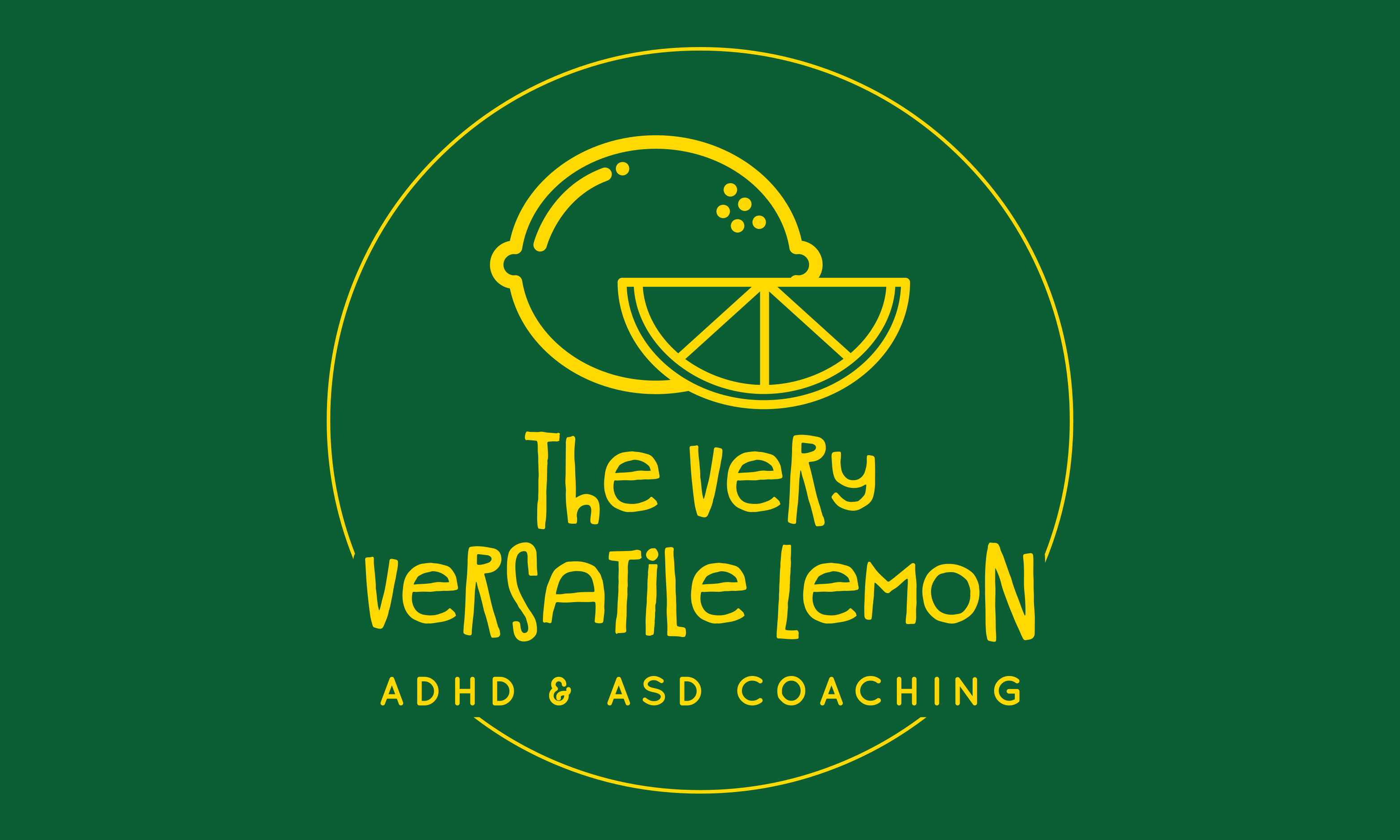
Benefits of Coaching for Co-Occurring ADHD and Autism
The benefits of coaching for adults with co-occurring ADHD and ASD are numerous. Here’s what you can expect:
- Improved Quality of Life: By managing symptoms and developing strategies, individuals can experience a significant improvement in their overall quality of life. This can include increased productivity, improved relationships, and a greater sense of well-being.
- Increased Self-Confidence: Learning how to manage co-occurring conditions can empower individuals and boost their self-confidence. Coaching helps them build on their strengths and celebrate their unique neurodiversity.
- Reduced Stress and Anxiety: Developing strategies for managing symptoms and emotions can significantly reduce stress and anxiety, leading to a calmer and more fulfilling life.
- Improved Relationships: Coaching can equip individuals with the skills they need to navigate social situations more effectively, leading to stronger relationships with family, friends, and colleagues.
- Greater Independence: Learning self-management skills allows individuals to gain greater independence and control over their lives, fostering a sense of self-efficacy.
Finding the Right ADHD and Autism Coach
When seeking an ADHD and ASD coach with expertise in co-occurring conditions, consider the following:
- Qualifications: Look for a coach certified by a reputable organisation, such as ADDCA (Attention Deficit Disorder Coaching Academy) or the International Coach Federation (ICF).
- Experience: Find a coach with experience working with adults who have both ADHD and ASD.
- Approach: Choose a coach whose approach aligns with your values and preferences. Some coaches focus on specific areas like executive function or social skills, while others offer a more holistic approach.
- Communication Style: Find a coach who you feel comfortable communicating with openly and honestly.


Conclusion
Co-occurring ADHD and ASD can be a complex challenge, but it doesn’t have to define your life. Coaching can be a powerful tool that can empower you to thrive. By developing a deeper understanding of yourself, learning new strategies, and receiving ongoing support, you can manage your symptoms, achieve your goals, and live a fulfilling life.
Additional Resources
- Attention Deficit Disorder Association: https://add.org/
- National Autistic Society: https://www.autism.org.uk/
- The Coaching Academy: https://www.the-coaching-academy.com/what-is-coaching/
- International Coach Federation: https://coachingfederation.org/
Remember: You are not alone. There are resources available to help you navigate co-occurring ADHD and ASD. Coaching can be a transformative journey towards self-discovery, empowerment, and a brighter future. Take the first step today and seek a qualified coach who can support you on your path.
For many individuals on the autism spectrum, the world can feel like a sensory overload, a constant barrage of stimuli requiring constant processing. While this unique neurology comes with its own strengths, it also carries the risk of autistic burnout, a state of profound physical, emotional, and mental exhaustion. Understanding this phenomenon and exploring strategies for recovery, including coaching, can be crucial for individuals experiencing autistic burnout, as well as their loved ones.
What is Autistic Burnout?
Autistic burnout isn’t simply feeling tired or stressed. It’s a complex and distinct experience often triggered by prolonged exposure to overwhelming environments and demands that exceed an individual’s capacity to cope. Unlike typical burnout, which is often work-related, autistic burnout can stem from various factors, including:
- Sensory overload: Constant exposure to bright lights, loud noises, or overwhelming social interactions can deplete energy reserves.
- Social challenges: Difficulty with social cues, communication, and navigating social situations can be emotionally draining.
- Rigid routines and transitions: Unexpected changes or disruptions to routines can be highly stressful for individuals with autism.
- Camouflaging: Masking autistic traits to fit in can lead to emotional and mental exhaustion.
Recognising the Signs
Autistic burnout can manifest in various ways, and it’s important to remember that the experience can be unique to each individual. Some common signs of autistic burnout include:
- Emotional exhaustion: Feeling constantly drained and emotionally numb.
- Increased anxiety and depression: Feeling overwhelmed, hopeless, and losing interest in activities previously enjoyed.
- Loss of motivation: Difficulty completing tasks and a general lack of energy to engage in daily activities.
- Changes in sleep patterns: Difficulty sleeping or sleeping excessively.
- Sensory sensitivities: Increased sensitivity to sights, sounds, smells, tastes, or textures.
- Social withdrawal: Desire to isolate oneself from others, even loved ones.
- Cognitive difficulties: Difficulty concentrating, remembering things, or making decisions.

Recovery Strategies
Autistic burnout requires a multifaceted approach to recovery. Here are some strategies that can be beneficial:
- Prioritise rest and self-care: Ensure adequate sleep, relaxation activities, and engage in activities that bring joy and calmness. Special interests are a great way to decompress and anchor oneself.
- Reduce sensory overload: Identify and minimise triggers that contribute to sensory overload. This might include wearing noise-cancelling headphones, utilising calming spaces in the home, or reducing screen time.
- Establish healthy routines: Create predictable and consistent routines to provide structure and reduce the stress of unexpected changes.
- Seek professional support: Consider therapies like Cognitive Behavioural Therapy (CBT) to develop coping mechanisms and manage stress.
- Explore coaching: A coach specialising in autistic needs can provide tailored guidance and support towards managing autistic burnout and navigating daily life challenges.
The Role of Coaching in Recovery
Coaching can be a valuable tool in the journey towards recovering from autistic burnout. Here’s how:
- Personalised support: Unlike one-size-fits-all approaches, coaching provides personalised guidance and support tailored to the individual’s specific needs and experiences.
- Building self-awareness: Coaching can help individuals with autism understand their triggers, strengths, and limitations, empowering them to manage their energy and make informed choices.
- Developing coping mechanisms: A coach can help individuals develop practical skills to navigate stressful situations, manage sensory overload, and improve communication and social interactions.
- Goal setting and achieving: Coaching provides support in setting realistic goals and developing strategies to achieve them, fostering a sense of accomplishment and motivation.
- Advocacy and support: A coach can act as an advocate, helping individuals navigate interactions with healthcare professionals, educational institutions, or employers to ensure their needs are understood and supported.

Finding the Right Coach
Finding a qualified and experienced coach specialising in autism and burnout is crucial. Here are some tips:
- Seek recommendations: Look at reviews online, or ask therapists, psychiatrists, or other professionals you trust for recommendations for coaches specialising in autism.
- Research and interview coaches: Explore the qualifications, experience, and approach of potential coaches before making a decision. Coaches should offer free discovery calls to allow for you to get to know one another and to allow you to ask any questions.
- Consider your specific needs: Look for a coach who has experience working with autistic individuals experiencing burnout similar to yours.
- Utilises a collaborative and strength-based approach: Look for a coach who works with your diagnosis, and not against it, harnessing your strengths to overcome your challenges.
- Offers a safe and supportive environment to explore your experiences: Coaches should work with you at your level, in a non-judgemental and supportive manner.
Conclusion
Autistic burnout is a real and challenging experience. However, by understanding the signs, exploring various recovery strategies, and seeking professional support, individuals with autism can develop the necessary tools to overcome the burnout and reach a place of renewed energy and wellbeing. Remember, you are not alone in this journey, and with support and self-compassion, you can weather the storm and find your calm.
Additional Resources
- The National Autistic Society: https://www.autism.org.uk
- The Autistic Self Advocacy Network: https://autisticadvocacy.org/
- Autism Awareness Australia: https://www.autismawareness.com.au/
- Aspire Aspergers Victoria: https://aspergersvic.org.au/
- Autism CRC: https://www.autismcrc.com.au/
Introduction
Autistic burnout is a phenomenon that affects many individuals on the autism spectrum, yet it remains widely misunderstood. It’s characterised by a state of physical, emotional, and mental exhaustion, often resulting from prolonged stress, overload, or masking – the practice of camouflaging one’s autistic traits to fit into societal norms. In this blog post, we’ll delve into what autistic burnout entails, its impact, and most importantly, strategies to overcome and navigate through it.
What is Autistic Burnout?
Autistic burnout isn’t simply feeling tired or stressed; it’s a unique experience tied to the sensory and cognitive differences that come with being autistic. It can manifest differently in each individual but commonly involves heightened anxiety, executive dysfunction, sensory overload, and a depletion of coping mechanisms. Often, burnout occurs after a period of masking – the exhausting effort of appearing neurotypical, which can lead to a significant energy drain and mental fatigue.
Impact of Autistic Burnout
The impact of autistic burnout can be profound, affecting various aspects of an individual’s life. From difficulties in communication and social interactions to challenges in maintaining routines or fulfilling responsibilities, burnout can hinder daily functioning and lead to feelings of isolation, depression, and even physical health issues. Recognising the signs of burnout and addressing them promptly is crucial for promoting well-being and preventing further deterioration.
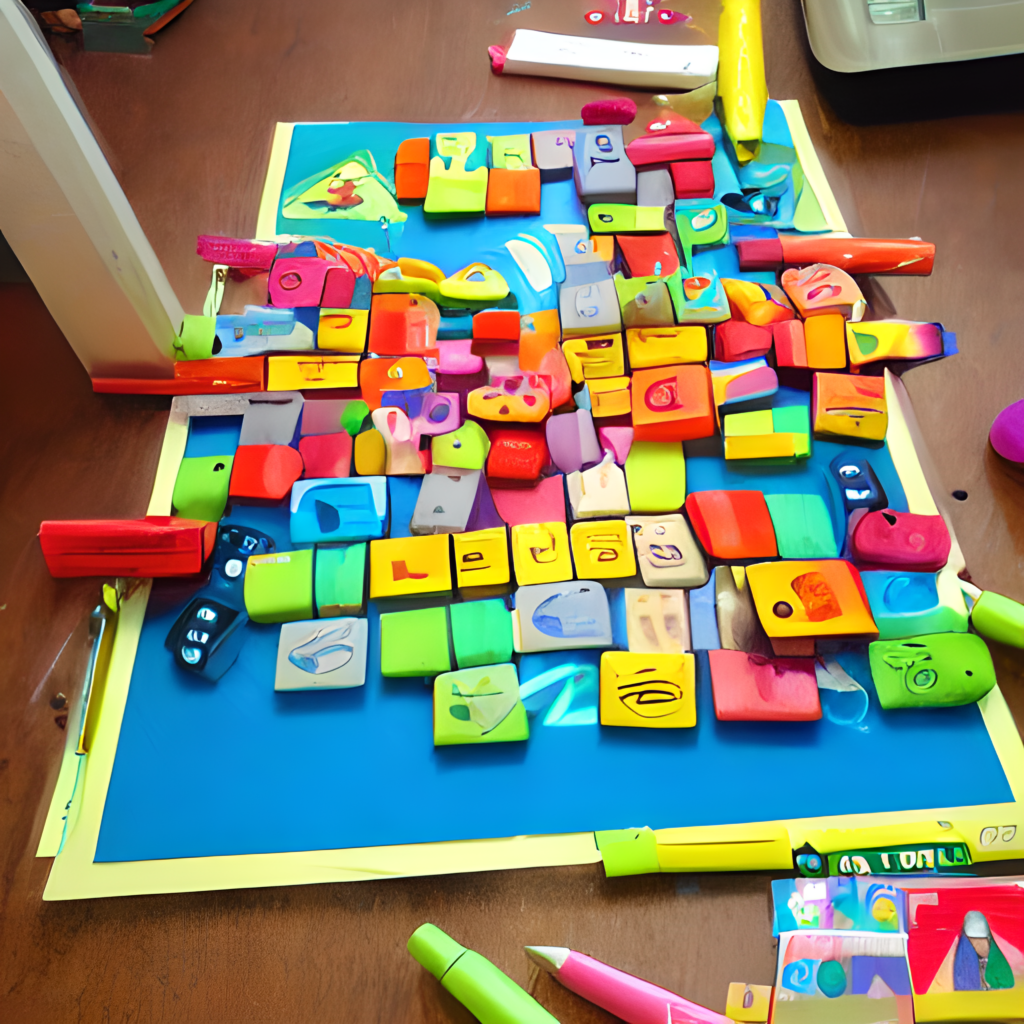
Autism Coaching
Seeking guidance from autism coaches can be immensely beneficial in navigating the challenges of autistic burnout. Autism coaches specialise in understanding the unique needs and strengths of autistic individuals, providing personalised support and strategies for overcoming obstacles and achieving personal goals. Through coaching sessions, individuals can gain valuable insights into their autistic traits, learn effective coping mechanisms, and develop practical strategies for managing burnout and enhancing overall well-being. Autism coaching offers a safe and non-judgmental space for individuals to explore their experiences, build self-confidence, and cultivate self-advocacy skills. By working collaboratively with a knowledgeable coach, individuals can develop a deeper understanding of themselves, uncover their potential, and thrive in both personal and professional aspects of life. (Learn more about autism coaching: The Very Versatile Lemon)
Strategies for Overcoming Autistic Burnout
- Self-awareness and Acceptance: Understanding one’s own autistic traits, limitations, and needs is the first step in managing burnout. Acceptance of oneself as an autistic individual, with unique strengths and challenges, can alleviate the pressure of constantly masking and trying to fit in. (For further reading: Autism Self-Advocacy Network)
- Establishing Boundaries: Learning to set boundaries is essential for protecting one’s mental and emotional energy. This may involve saying no to excessive social commitments, sensory triggers, or tasks that exceed one’s capacity. (For tips on setting boundaries: Psychology Today)
- Sensory Regulation Techniques: Developing personalised sensory regulation techniques can help in managing sensory overload. This could include creating a sensory-friendly environment, using sensory tools like noise-canceling headphones or fidget toys, and practicing relaxation techniques such as deep breathing or mindfulness. (Explore sensory strategies: Sensory Processing Disorder Foundation)
- Prioritising Self-Care: Prioritising self-care activities that promote relaxation and rejuvenation is vital for combating burnout. This could involve engaging in hobbies, spending time in nature, getting adequate rest, and maintaining a healthy lifestyle through exercise and nutrition. (For self-care ideas: Self-Care for All)
- Seeking Support: Seeking support from understanding friends, family members, or professionals, such as coaches, who are knowledgeable about autism can provide validation, guidance, and practical assistance in navigating through burnout. (Find support networks: Autism Society)
- Advocacy and Community Involvement: Engaging in advocacy efforts and connecting with the autistic community can foster a sense of belonging and empowerment. Sharing experiences, insights, and resources with others can help combat feelings of isolation and promote social inclusion. (Join autistic advocacy groups: Autistic Women & Nonbinary Network)

Conclusion
Autistic burnout is a real and challenging experience for many individuals on the autism spectrum, but it’s not insurmountable. By fostering self-awareness, establishing boundaries, prioritising self-care, seeking support, and engaging in advocacy efforts, individuals can navigate through burnout and thrive. It’s essential to recognise that everyone’s journey is unique, and finding strategies that work best for oneself is key to overcoming and managing burnout effectively. With greater understanding and support, individuals can embark on a path towards holistic well-being and fulfilment.
This article provides 20 practical tips and strategies for managing anxiety in individuals with autism, including the importance of early intervention, self-care practices, coaching, and creating a supportive environment.
Introduction to Managing Anxiety in Autism
Anxiety in individuals with autism spectrum disorder (ASD) refers to feelings of worry, fear, or unease that can significantly impact their daily lives. It is essential to understand that anxiety is not part of the diagnostic criteria for autism, yet many individuals with autism experience it. Unmanaged anxiety can have a profound effect on the quality of life for individuals with autism, affecting their interactions, well-being, and overall functioning.
Recognising these challenges, it is crucial to delve deeper into the prevalence of anxiety among individuals with autism. Research indicates that anxiety is a common comorbidity in autistic individuals, with estimates suggesting that up to 40% of children and adolescents with autism also experience clinically significant anxiety. This high prevalence underscores the necessity of addressing anxiety in the autism community to enhance the overall quality of life for these individuals.
Moreover, the impact of unmanaged anxiety on individuals with autism can manifest in various ways. For instance, anxiety can heighten sensory sensitivities, leading to increased distress and potential meltdowns in response to overwhelming stimuli. Additionally, anxiety may exacerbate social challenges, making it difficult for individuals with autism to navigate social interactions and form meaningful connections. By understanding these facets of anxiety in autism, interventions and support systems can be tailored effectively to address the unique needs of individuals on the spectrum.
Understanding Anxiety in Autism
Common anxiety triggers for individuals with autism encompass a range of factors, from disruptions to routines and sensory sensitivities to challenges in social interactions. For instance, a sudden change in routine, like an unexpected transition from one activity to another, can trigger anxiety in autistic individuals. Moreover, sensory sensitivities, such as sensitivity to loud noises or bright lights, can overwhelm their senses and lead to heightened anxiety levels. These triggers highlight the importance of creating structured and predictable environments to help individuals with autism feel secure and reduce anxiety-provoking situations.
In addition to disruptions in routines and sensory sensitivities, challenges in social interactions can significantly contribute to anxiety among individuals with autism. For example, difficulties in interpreting social cues or engaging in reciprocal conversations can lead to feelings of isolation and anxiety. This social anxiety can be exacerbated in unfamiliar or overwhelming social settings, making it essential to provide support and tools to help autistic individuals navigate social scenarios effectively. By recognising these common triggers and understanding their impact, caregivers and professionals can tailor interventions to alleviate anxiety and promote a better quality of life for individuals with autism.

Practical Tips for Managing Anxiety in Autism
Autism coaches are invaluable in assisting individuals with autism in managing anxiety, offering tailored strategies and ongoing support to navigate the challenges they face. For example, an autism coach may work with an individual to create a personalised anxiety management plan that includes identifying triggers, implementing coping mechanisms, and setting achievable goals to reduce anxiety levels effectively.
In addition to the support provided by autism coaches, self-care practices are essential tools for individuals with autism to incorporate into their daily lives to manage anxiety symptoms. For instance, practising mindfulness techniques enables individuals to stay present in the moment, reducing overthinking and promoting a sense of calm. Furthermore, deep breathing exercises can help regulate emotions during moments of heightened anxiety, providing a practical and accessible way to cope with stress. Moreover, taking sensory breaks, such as stepping away from overwhelming environments or engaging in soothing activities, can offer individuals with autism the opportunity to recharge and reset, contributing to improved emotional well-being and anxiety management.
Moreover, integrating relaxation techniques and stress-reduction activities into daily routines can be transformative for individuals with autism in managing anxiety [4]. For example, engaging in activities like yoga, meditation, or listening to calming music can help regulate emotions and promote relaxation, offering individuals effective tools to cope with anxiety triggers. By establishing these practices as part of their daily routines, individuals with autism can proactively address their anxiety symptoms, enhance their emotional resilience, and improve their overall well-being [4].
Creating a Supportive Environment for Individuals with Autism
Creating a supportive environment for individuals with autism involves implementing various strategies to ensure their well-being and comfort. For instance, using visual schedules and social stories can help individuals with autism understand expectations and reduce anxiety by providing predictability in their routines. By establishing routines and incorporating visual aids, caregivers and educators can offer individuals with autism a sense of structure and stability, which can significantly decrease feelings of uncertainty and anxiety. Additionally, deep pressure stimulation and proprioception techniques, such as weighted blankets or compression garments, can help calm individuals with autism by providing sensory input that aids in regulating their nervous systems and promoting relaxation.
Moreover, when designing sensory-friendly environments, it is essential to consider the individual sensory sensitivities of each person with autism. For example, creating quiet spaces with dimmed lighting and noise-canceling headphones can be beneficial for those who are sensitive to loud noises and bright lights. By being mindful of sensory triggers and adapting the environment accordingly, caregivers and educators can foster a safe and comfortable space where individuals with autism feel secure and supported. Ultimately, by tailoring the environment to accommodate the specific needs of individuals with autism, it becomes possible to minimise anxiety triggers and create a setting that promotes their overall well-being and mental health.

Autism Coaching for Anxiety
Collaboration with autism coach plays a crucial role in supporting individuals with autism in managing anxiety effectively. These coaches work together with the client to create personalised anxiety management strategies that are tailored to the unique strengths, needs and challenges of each individual. For example, an autism coach may help an individual with autism identify specific anxiety triggers, develop coping mechanisms, and establish a structured routine to promote a sense of security and predictability in their daily life.
Moreover, gradual exposure therapies, such as systematic desensitisation, are often utilised to help individuals with autism gradually confront and overcome their fears or anxieties. This approach involves exposing the individual to anxiety-provoking situations or stimuli in a controlled and gradual manner, allowing them to build resilience and develop effective coping strategies over time. Similarly, social stories, which are short narratives that describe social situations and appropriate responses, can assist individuals with autism in understanding and navigating challenging social interactions that may trigger anxiety.
Strategies for Anxiety Management in Autism
Cognitive behavioural therapy (CBT) has been widely acknowledged for its effectiveness in reducing anxiety symptoms in individuals with autism. By focusing on identifying and challenging negative thought patterns and behaviours, CBT equips individuals with valuable skills to manage their anxiety. For instance, a person with autism who experiences social anxiety in group settings may benefit from CBT sessions that help them reframe their thoughts about social interactions and develop coping mechanisms to navigate such situations more comfortably. In cases where anxiety symptoms are severe and significantly impact an individual’s daily functioning, healthcare professionals may consider the use of medications as part of the treatment plan.
Moreover, it is crucial to recognise the importance of tailoring anxiety management strategies to the specific neurology and requirements of each individual with autism. What works effectively for one person may not be as beneficial for another, highlighting the necessity for personalised support and interventions. By customising anxiety management approaches, such as coaching and incorporating sensory-based relaxation techniques, for those with sensory sensitivities, individuals with autism can receive the tailored support they need to effectively manage their anxiety.
This blog article explores the challenges and strategies for being the best partner in a neurotypical-autistic relationship, including effective communication, understanding needs, and fostering a strong and healthy relationship.
Neurotypical Behaviour and Autism
Navigating a relationship between a neurotypical person and an autistic individual can present various challenges, including misunderstandings and frustrations stemming from differences in communication and social interaction. Autistic individuals often have intense special interests, including romantic relationships, which can sometimes be difficult for neurotypical partners to understand and relate to. For instance, an autistic individual may have a deep passion for a specific topic or hobby, and their neurotypical partner might struggle to comprehend the extent of this interest, leading to feelings of disconnect or isolation. Therefore, it is essential for neurotypical partners to recognise and appreciate the intensity and significance of these special interests, fostering an environment of support and encouragement.
In addition, it is crucial to dispel myths about autism, such as the misconception that autistic individuals lack empathy or do not experience emotions. In reality, autistic people can fall in love and are very empathetic, but they may struggle with expressing emotions and may withdraw during conflict. Therefore, neurotypical partners should approach emotional expression with patience and understanding, recognising that their autistic partner may require additional time and support to convey their feelings effectively. By acknowledging and accepting the diverse ways in which emotions are expressed and experienced within the autistic community, both partners can cultivate a deeper understanding and appreciation for each other’s emotional landscapes, enhancing the overall connection and intimacy in the relationship.
Communication in Neurotypical-Autistic Relationships
In neurotypical-autistic relationships, effective communication plays a crucial role in fostering understanding and harmony. One key strategy is the use of direct and clear communication, especially when one partner is neurodivergent. For instance, a neurotypical partner may need to be direct in expressing their thoughts and emotions, ensuring that their autistic partner comprehends their perspective. By being straightforward and explicit in their communication, the neurotypical partner can help minimise misunderstandings and create a conducive environment for open dialogue.
Moreover, active listening is an essential aspect of effective communication in these relationships. Both partners should actively engage in listening to each other, showing empathy, and acknowledging each other’s viewpoints. This not only promotes mutual understanding but also fosters a sense of validation and respect within the relationship. Additionally, reducing assumptions can prevent misinterpretations and conflicts, allowing both partners to express themselves freely without the burden of preconceived notions or biases.
It’s also crucial to recognise the impact of sudden changes on autistic individuals. For example, an unexpected alteration in plans or routines can lead to heightened anxiety for the autistic partner. Understanding this need for stability and predictability can help the neurotypical partner navigate the relationship more sensitively, thereby strengthening the bond and trust between them.
Support and Accommodation for Neurotypical Needs
Accommodating sensory sensitivities and social settings is crucial for supporting neurodivergent partners within the relationship. Sensory sensitivities can manifest in various ways for autistic individuals, such as being hypersensitive to loud noises, bright lights, or certain textures. For instance, a neurotypical partner can help create a sensory-friendly environment by using dimmer lights, reducing background noise, or avoiding scratchy fabrics, thus contributing to the comfort and well-being of their autistic partner.
In addition to sensory accommodations, it’s imperative to avoid fostering a parent-child dynamic in relationships with autistic individuals, instead, approaching the partnership as equals and respecting each other’s autonomy and agency. This can be demonstrated by involving the autistic partner in decision-making processes, acknowledging their opinions, and valuing their independence. By doing so, both partners can contribute to a more balanced and respectful dynamic within the relationship.
Addressing moments of overwhelm with compassion and understanding towards the neurodivergent partner can significantly contribute to a supportive and harmonious relationship. For example, if an autistic individual experiences sensory overload in a crowded social setting, a neurotypical partner can offer understanding and support by creating a safe space for them to decompress, whether it’s finding a quiet corner or leaving the environment altogether. This understanding and support can help the autistic partner feel respected and cared for during challenging moments.

Building a Strong and Healthy Relationship
When seeking to build a strong and healthy relationship with an autistic individual, it’s crucial to recognise the significance of seeking therapy services that are specifically tailored to support romantic relationships on the autism spectrum. These therapy services can offer invaluable guidance and assistance in navigating the unique dynamics of such partnerships, providing a safe space for both partners to express their needs, concerns, and aspirations. Through therapy, partners can learn effective communication strategies, gain a deeper understanding of each other’s unique perspectives, and develop the necessary tools to address challenges that may arise within the relationship.
Furthermore, accommodating the needs and desires of both neurotypical and autistic partners is fundamental for fostering emotional intimacy and ensuring that the relationship is fulfilling for all involved. This might involve creating an environment that respects sensory sensitivities, understanding the impact of intense special interests on the relationship, and acknowledging the importance of clear and direct communication for neurodivergent partners. For instance, a neurotypical partner may need to make adjustments to social settings, such as choosing quieter venues or limiting the duration of outings to accommodate the sensory sensitivities of their autistic partner. By doing so, both partners demonstrate their commitment to understanding and supporting each other, ultimately strengthening the bond between them.
Navigating Intense Special Interests and Romantic Relationships
It’s essential to recognise that intense special interests can have a significant impact on romantic relationships involving an autistic individual. For example, an autistic person may have a deep passion for a specific topic or activity, such as collecting vintage records or studying astronomy. This intense focus can sometimes lead to challenges in the relationship, as the neurotypical partner may find it difficult to relate to or understand the depth of their partner’s interest. However, by acknowledging the positive aspects of these intense interests, such as the passion and dedication they represent, both partners can work towards a mutual understanding and respect for each other’s unique passions.
In addition to the challenges, there are also benefits to navigating these intense special interests in the relationship. For instance, the neurotypical partner can learn from the autistic individual’s focused dedication and commitment, which can inspire a similar level of devotion in their own pursuits. By openly discussing and sharing their respective interests, the couple can find common ground and even discover new activities that they both enjoy, thus strengthening their bond and creating shared experiences. Ultimately, fostering an environment of encouragement and support for each other’s individual passions can contribute to the overall health and happiness of the relationship.

Overcoming Autism Relationship Problems
When it comes to relationships with autistic individuals, various challenges can arise, impacting the dynamics between partners. For instance, reading social cues, managing anxiety, and addressing sensory issues can be particularly difficult for autistic individuals. These challenges can lead to misunderstandings and frustrations in the relationship, as the neurotypical partner may struggle to understand and navigate these aspects of their partner’s experience. However, it’s important for both partners to recognise the impact of these challenges and work together to find effective strategies for overcoming them.
For example, a common challenge in autistic-neurotypical relationships is the interpretation of social cues. Autistic individuals may find it challenging to read non-verbal communication and subtle social hints, leading to misunderstandings or feelings of isolation. In such cases, the neurotypical partner can play a supportive role by clearly expressing their thoughts and feelings, thus fostering open communication and mutual understanding within the relationship. By recognising the impact of these challenges and proactively addressing them, both partners can navigate these difficulties more effectively, strengthening their bond and fostering a supportive environment for personal growth.
Another aspect of overcoming relationship challenges involves building new social connections and coping with rejection as an autistic adult. This can be vital for fostering resilience and a sense of belonging within the broader social context. For instance, engaging with the neurodivergent community, following personal interests, and scheduling relaxation time are all ways in which an autistic individual can build new social connections and find a supportive network. By doing so, they can not only find understanding and acceptance outside the relationship but also bring a sense of fulfilment and balance into their personal lives, which can positively impact the relationship dynamic. Therefore, recognising the importance of these aspects and supporting each other in navigating them can significantly contribute to the strength and resilience of the relationship.
Click here for more blog posts.
This article explores the connection between autism, ADHD, and Ehlers Danlos Syndrome, highlighting the shared symptoms, co-occurrence of conditions, available treatments, and resources for support.
Understanding Autism, ADHD, and Ehlers Danlos Syndrome
Autism, ADHD, and Ehlers Danlos Syndrome are complex conditions that have significant impacts on individuals’ lives. Autism is often associated with challenges in social interaction, communication, and repetitive behaviours, while ADHD is characterised by symptoms of inattention, hyperactivity, and impulsivity. On the other hand, Ehlers Danlos Syndrome encompasses a group of genetic disorders affecting connective tissues, leading to a range of symptoms, including joint hypermobility.
Individuals with autism, ADHD, and Ehlers Danlos Syndrome commonly experience various challenges and overlapping symptoms. For instance, individuals with autism may exhibit sensory sensitivities, making it difficult for them to process and respond to sensory information like touch, sound, and light. Similarly, individuals with Ehlers Danlos Syndrome may also experience sensory issues, such as heightened sensitivity to pain and touch due to their connective tissue disorder. Understanding the shared symptoms and challenges among these conditions is crucial in providing comprehensive and effective support and care for individuals affected by them.
Moreover, individuals with ADHD often struggle with executive function skills such as planning, organisation, and time management. These challenges can significantly impact their daily lives, education, and work. In the same vein, individuals with Ehlers Danlos Syndrome, especially those with joint hypermobility, may also face difficulties in motor skills and coordination due to the instability of their joints. Therefore, recognising these commonalities among the conditions can aid in the development of tailored interventions and therapies to address the diverse needs of individuals with autism, ADHD, and Ehlers Danlos Syndrome.
The Connection: Joint Hypermobility and Neurodivergence
The connection between joint hypermobility and neurodivergence is a significant area of research, shedding light on the overlapping symptoms and conditions associated with Ehlers Danlos Syndrome and autism. Studies have found that individuals with joint hypermobility , Ehlers Danlos Syndrome (EDS), and hypermobility spectrum disorders are more likely to be autistic, highlighting a potential link between these conditions. For instance, a study by BSMS revealed that over 50% of neurodivergent participants had elevated levels of hypermobility, suggesting a strong association between joint hypermobility and autism.
Moreover, neurodivergent individuals with joint hypermobility have reported experiencing more symptoms of pain and dysautonomia. This overlap of symptoms indicates the complexity of managing these conditions and the need for tailored medical intervention. Additionally, the Beighton Scoring System, which is a standard physical assessment to identify joint hypermobility, is recommended for use in identifying joint hypermobility in autistic individuals. This system can be an essential tool for healthcare professionals to diagnose and understand the extent of joint hypermobility in individuals with autism, enabling them to provide appropriate care and support.
The high prevalence of joint hypermobility in autistic individuals and the increased symptoms of pain and dysautonomia highlight the need for greater awareness and understanding of this association. It is crucial for medical practitioners to recognise the interconnection between joint hypermobility and neurodevelopmental conditions like autism and to develop targeted interventions to address the specific needs of individuals with these overlapping conditions. This comprehensive approach can lead to improved outcomes and better quality of life for those affected by joint hypermobility and neurodivergence.
Co-Occurrence of Conditions
The co-occurrence of Ehlers Danlos Syndrome (EDS) and autism is a topic of growing interest and concern within the medical and research communities. Studies have shown that there is a higher prevalence of EDS in individuals with autism compared to the general population, indicating a potential link between the two conditions. This presents a significant challenge for individuals and their families, as the simultaneous management of symptoms associated with both EDS and autism can be complex and demanding.
For instance, many autistic individuals with EDS often experience overlapping symptoms, such as attention-deficit/hyperactivity disorder (ADHD), learning disorders, sensory sensitivities, and mental health issues. This overlap can exacerbate the challenges faced by individuals, potentially impacting their daily functioning and overall quality of life. Moreover, both conditions are associated with coordination problems, sensory issues, autonomic dysregulation, and immune dysregulation, further complicating the clinical picture for individuals living with these co-occurring conditions. This underscores the need for a comprehensive and multidisciplinary approach to address the diverse and interconnected symptoms arising from the co-occurrence of EDS and autism.
It is crucial for healthcare professionals to be well-informed about the potential co-occurrence of these conditions, ensuring that individuals receive accurate diagnoses and appropriate support. Moreover, families and caregivers should be equipped with the necessary resources and guidance to navigate the complexities of managing these co-occurring conditions effectively. By recognising and addressing the shared symptoms and challenges associated with EDS and autism, it becomes possible to provide more targeted and holistic care to individuals affected by these conditions. [2].
Available Treatments and Therapies
When it comes to individuals affected by autism, ADHD, and Ehlers Danlos Syndrome, it’s essential to understand that they may require similar therapies and treatments due to the overlapping symptoms and challenges associated with these conditions. For instance, individuals with autism often benefit from behavioural therapies, speech therapy, and occupational therapy to address communication difficulties and sensory issues, which can also be beneficial for individuals with ADHD and Ehlers Danlos Syndrome. Moreover, those with Ehlers Danlos Syndrome may require physical therapy and pain management strategies to address joint hypermobility and chronic pain, which can also be beneficial for individuals with autism and ADHD who experience similar issues [4].
Furthermore, management of symptoms can be achieved with support and advice from healthcare professionals, including a multidisciplinary approach involving specialists such as neurologists, geneticists, occupational therapists, and psychologists. For example, individuals with Ehlers Danlos Syndrome and autism may benefit from a comprehensive treatment plan that addresses their physical, neurological, and psychological needs. This could include tailored exercise regimens to improve joint stability, cognitive behavioural therapy to address anxiety or depression, and medications to manage autonomic dysregulation [4].
In addition, there is a pressing need for specific recognition, research, and treatments for the association between Ehlers Danlos Syndrome and autism. Currently, there is a lack of specific guidelines or targeted interventions for individuals who have both conditions. Therefore, increasing awareness among healthcare professionals and conducting further research to understand the unique needs of individuals with both Ehlers Danlos Syndrome and autism is crucial to developing effective treatments and improving the quality of life for these individuals. These efforts can lead to the development of tailored interventions that address the complex interplay of symptoms and provide the necessary support for individuals affected by the co-occurrence of these conditions.

Support and Resources
The Ehlers-Danlos Society has been actively working to increase awareness of the intricate relationship between autism and joint hypermobility. By collaborating with experts like Dr. Carolina Baezo-Velasco, who is an expert in Ehlers Danlos Syndrome and Autism, the society has been able to provide valuable insights and resources for individuals and families affected by these conditions. Their efforts have been instrumental in shedding light on the co-occurrence of Ehlers Danlos Syndrome and autism, offering support and guidance to those navigating these complex conditions.
For parents of children with autism who exhibit symptoms consistent with Ehlers Danlos Syndrome, obtaining a proper diagnosis and seeking appropriate treatment is crucial. The overlap of symptoms between these two conditions necessitates careful consideration and evaluation. By being proactive in seeking medical attention, parents can ensure that their child receives the necessary support and interventions tailored to their specific needs. This proactive approach can significantly impact the child’s well-being and overall quality of life, empowering them to better manage the challenges associated with the co-occurring conditions.
Furthermore, for individuals and families seeking a deeper understanding of Ehlers Danlos Syndrome in the context of autism, a wealth of resources is readily available. These resources encompass educational materials, support networks, and guidance for navigating the unique challenges posed by the co-occurrence of these conditions. Access to reliable information and support can be invaluable in empowering individuals and families to make informed decisions and navigate the complexities of living with autism and Ehlers Danlos Syndrome.
For more blog posts, please click here.

